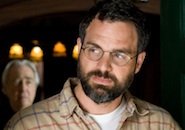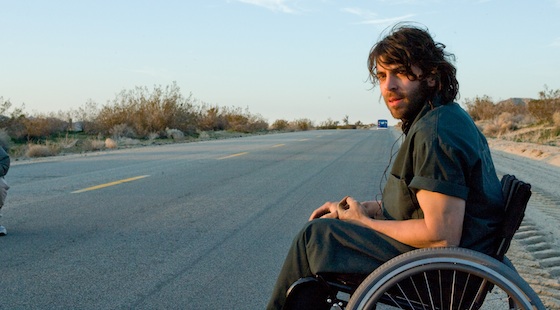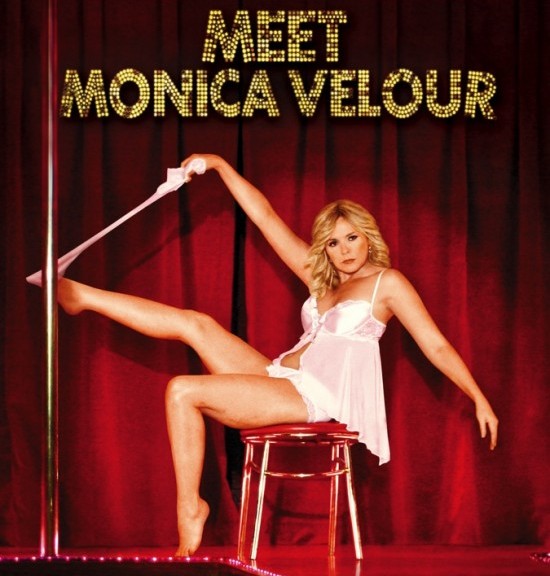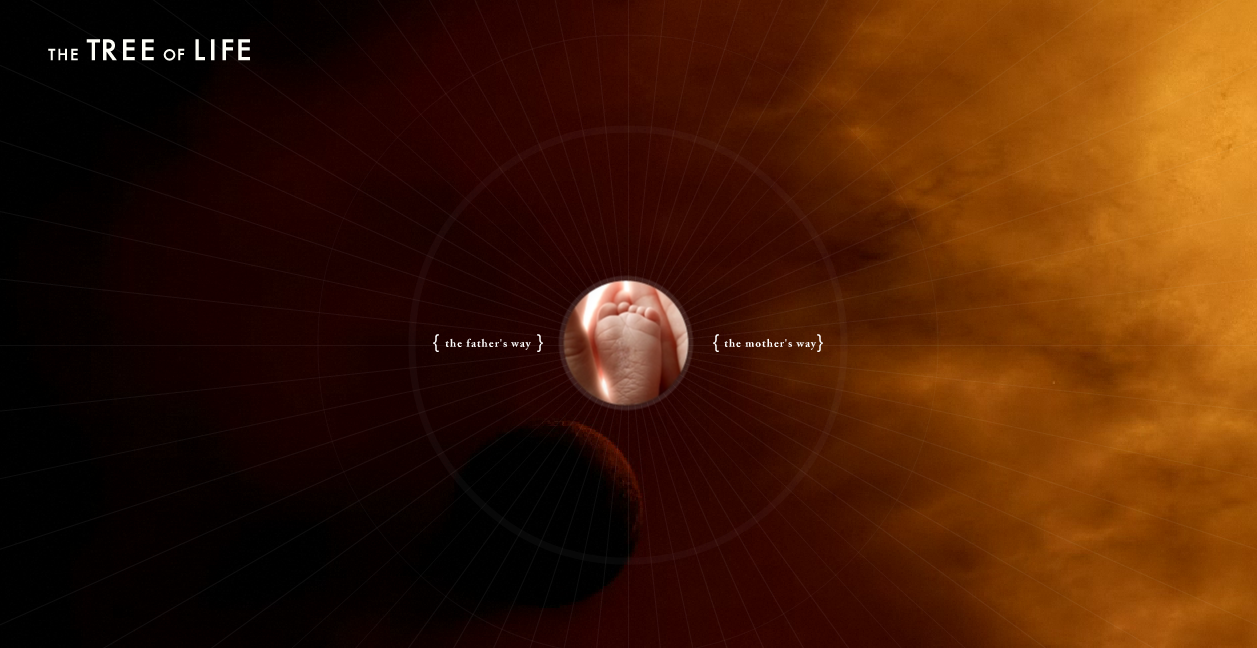April 27, 2011
 “I have seen pictures of Stan’s work and it is still incredible . . . but it doesn’t come close to the catharsis of seeing it on an epic scale. No one owns a tv big enough to truly experience this film. “
“I have seen pictures of Stan’s work and it is still incredible . . . but it doesn’t come close to the catharsis of seeing it on an epic scale. No one owns a tv big enough to truly experience this film. “
EARTHWORK is the true story of real life crop artist Stan Herd (played by Academy Award nominee John Hawkes) who leaves his native Kansas to risk it all, planting his unique, rural art form in New York City with the help of a group of homeless characters on a plot of land owned by Donald Trump.
Filmmaker Chris Ordal graciously answered our questions about his debut feature film and will be available with the real life Stan Herd for your questions at Q&A sessions following the 7:30PM shows on Friday and Saturday.
This is your debut feature film, how did you choose the subject?
It sounds crazy, but I knew the second I heard a friend casually mention Stan’s New York story that I was going to make a film about it – and not in a general sense – I had an immediate vision of a narrative feature exploring that single episode of Stan’s life, focused on his relationship with the homeless growing in concert with the art he was planting and exploring what that work of art did to those characters. It was a literal gut reaction; I just had a hunch and went with it.I had been wanting to make my debut feature something that set itself apart from other independent films, but I wanted to do so in a way that emphasized story and not style or shock value. I wasn’t interested in making a calling card, I was focused on making a film whose story would be as relevant many years from now as it was the moment I wrote it. When Stan’s story landed in my lap, it just fit. You only get one chance to make your first film, and EARTHWORK is the story that most inspired me.
How did you first hear of crop artist, Stan Herd?
I was going to school at KU in Lawrence, KS where Stan lives and we had mutual friends. I knew OF him, but didn’t really know him at all. I approached Stan about the film I wanted to make. He was very generous with his time and was willing to sit through endless sessions of me asking questions.I don’t think he really took me that seriously until the day I finally got him to open up about his relationship with the homeless characters. At one point, Stan recalled a moment so profound he caught himself off guard with it. He looked at me, realizing, for the first time, really, how powerful the story was, and it immediately clicked. From that moment on Stan was completely on board. I began gathering as much information as I could, interviewing Stan, pouring over every article, photo and news piece I could find and ultimately working alongside him on a number of earthworks. He was very supportive, but admittedly skeptical that a 24-year-old kid was going to get a feature film off the ground that involved recreating one of his most complicated earthworks.
In the 3 years I spent raising the money to make the film, Stan and I became good friends. I became his go-to videographer and helped “produce” on a number of his works. Producing usually meant calling the local airport to schedule flights and coordinating with photographers, but it also meant helping Stan keep track of deadlines . . . and his keys and cell phone. What fascinated me about Stan as a character was that he is a true artist with a unique vision, but not a cliché. He is not the eccentric, substance-abusing, introvert we’ve seen so many times before. He’s a genius, but one far more people can relate to. Here was a character with big dreams but limited means. A man with a family. An artist in need of an audience.
At one point in my research I watched as Stan, unable to raise any money, convinced a farmer to let him use a few acres of land where nothing would grow, to create a portrait of a world leader Stan greatly admired who had recently passed. Without planting a single thing, I watched Stan plow the field and simply carve lines with a hoe. From the ground it looked like nothing but dirt. I watched Stan stare at the ground, unsatisfied when he had finished the piece. Suddenly his eyes lit up and he ran across the field, almost child-like. He grabbed three pieces of straw and tossed them onto the ground, crouching down to adjust them slightly. The smile on his face had me thinking he was insane, but when I flew over the field to capture video, I saw that the three tiny pieces of straw created a twinkle in the eye of the portrait and brought acres of dead land to life.
The movie theater is as close as it gets to the real thing. I want the entire world to know about Stan Herd and the art he creates. We will eventually release EARTHWORK on video, but we’re going to wait to do so for a long, long time. I have seen pictures of Stan’s work and it is still incredible . . . but it doesn’t come close to the catharsis of seeing it on an epic scale. No one owns a tv big enough to truly experience this film. Stan’s art and this film are meant to bring great numbers of people together to experience something profound. There are those special films that simply must be seen on the big screen to be appreciated and EARTHWORK is definitely one of those films.I was lucky, I discovered Stan Herd by being in the right place a the right time. This film is for everyone else; those who can afford a movie ticket but not a helicopter. Although, I think people who own a helicopter would really dig it too.
The film centers around Herdâ??s 1994 project on the Upper West Side of Manhattan. Why focus on that particular earthwork?
I get very excited when I discover new things and I love when someone shows me something I have seen many times before – something I have come to take for granted – and shows it to me in such a way that it’s as if I am seeing it for the first time. This story was filled with opportunities for me to give that same sense of discovery to an audience. Instead of another story about a household name, this was an artist most have never heard of – an ART most have never heard of (Stan doesn’t create crop “circles,” he creates crop art – I was amazed at how difficult the difference is to communicate to people, and have grown to feel Stan’s pain when his work is defined in such limited terms). There are so many great stories out there, but this was one that wasn’t just calling out to be told, it was calling out to be told via the cinema. As a chronic cinephile, I was excited to make the kind of film I felt people had been taking for granted. It also helps that the ending holds more power today than it did when it actually happened.
After studying hours of archival footage from the New York site during my research, I was amazed to discover how much untouched land existed near the Hudson River back in 1994. I would show people actual footage taken while Stan was in New York City and they (a number of them New Yorkers) didn’t believe that’s where he was until I would show them the shots that panned up to the skyscrapers in the background. There were huge patches of vegetation, wildlife – there’s even a pheasant running across the land! The footage is so incredible that we had to include it in the closing credits just to show the audience how real it all is. New York City is such an incredible world with endless locations, but we rarely see it presented in movies and tv in a way that surprises us. Stan’s piece on the Upper West Side gave me the opportunity to give audiences a new perspective.Stan’s art is of such scale and magnitude that it is impossible for him to complete on his own. The cast of characters Stan collaborated with and the conditions he completed it under made this particular earthwork the best metaphor for Stan’s art as a whole. Even more important than representing Stan’s art is connecting to all the other artists out there; musicians, painters, dancers, writers . . . everyone has some kind of earthwork they want to share with the world. Stan’s earthwork in New York City never got the attention it deserved back in 1994, and being a temporary art form it is unfortunately gone forever. I chose to make this film to ensure that people would have a chance to see how incredible that particular earthwork was and to make sure that at least the story would survive.
What was the most challenging aspect of making this film?
Every filmmaker deals with the trials and tribulations that come with getting a feature film made. What sets EARTHWORK apart from most films is that one of our cast members was extremely difficult to work with. John Hawkes was amazing as our leading man, but what made things difficult was that his love interest was a two acre work of crop art that was simultaneously acting as our set. We had to evolve the world of our film just as any other production would, but our world was a living breathing nature diva that had no intention of adjusting to our timetable or budget. It’s a testament to our entire crew that we pulled it off. A good portion of our days were spent with production equipment set aside while the crew got down in the dirt and helped change the earthwork from one growth stage to the next so we could set up for the next scene. Even if we could have afforded to shoot in-sequence it would have been a battle. Our entire human cast was a dream to work with, but I won’t be casting Mother Nature in another leading role . . . ever.
Filmmaking and farming are, by themselves, extremely difficult and risky enterprises. I don’t recommend doing them at the same time.
In the film, as in real life, Stan Herd befriends and enlists the help of several homeless people in the area. Were you able to connect with any of them in the research for this film? Does Herd still keep in touch with him?There were a number of subjects from the film we simply couldn’t get a hold of because once Stan left New York, he had no way of staying in touch with them. Back then, not many people, especially those without an address, had mobile phones. I would have loved to gain further insight into those characters, but I was left to take the stories Stan had told, along with the limited photos, research and archival footage I had, and create my own characters that captured the spirit of the individuals that meant so much to Stan – Ryan in particular. Stan’s feelings towards the guys that helped him create his masterpiece were obviously very strong and there were times it was difficult for him to think back on how many years had gone by without the ability to go back or get in touch. Knowing that the land they had worked on was now fully developed and underneath skyscrapers, Stan didn’t think he would ever see them again.But then, while EARTHWORK was playing the film festival circuit, Stan took his son, Evan to New York City as a high school graduation gift. The two had not been back to the city together since Stan had created his earthwork there in 1994. Stan decided to show Evan the site where he had spent all those months, during which Evan was too young to remember. As they approached the site, not more than a block from the buildings that now stood there, Stan and Ryan literally bumped into each other on the sidewalk! Stan called out to his old friend, who couldn’t believe it. “Herd!?! You got old.” Stan, Evan and Ryan had the opportunity to spend a great deal of time together that weekend.Only in New York.
I knew Stan was in New York that week but wasn’t expecting to hear from him. And I DEFINITELY was not expecting him to call and tell me that he was hanging out with Ryan . . . at the very spot where they grew the earthwork a decade and a half before! Stan e-mailed me a picture they took together and after all the time I had spent with the stories, photos and footage of them from 1994, it was a pretty surreal experience for me – and I wasn’t even there. I can’t even imagine how emotional it must have been for Stan and Ryan, but it’s pretty cool to know that they have reconnected. I can only hope that somehow the film played a part in making that happen.
What can we look forward to from you next?Believe it or not, my wife asked me that same question this morning regarding our bills. I guess the best way to answer your question is to tell you what I told her, “I promise, as soon as I get word on the box office numbers, I will let you know. I can’t say exactly what it’ll be, but you have my word that it’s coming as soon as I can make it happen.”
EARTHWORK opens at the Angelika New York this Friday, April 29. Advance tickets are available online.









